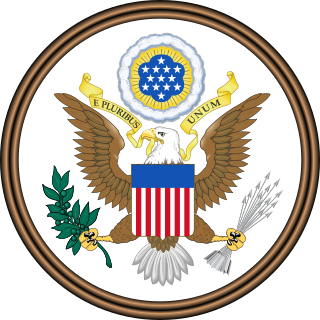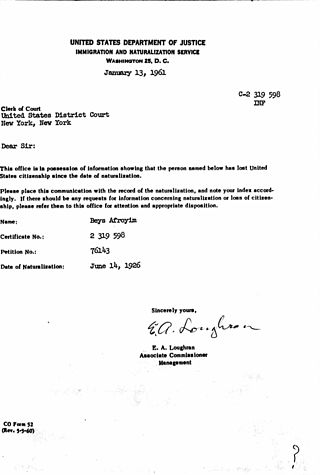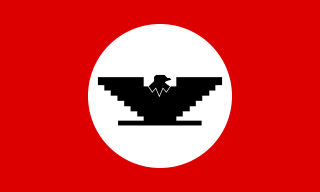
The New York City draft riots, sometimes referred to as the Manhattan draft riots and known at the time as Draft Week, were violent disturbances in Lower Manhattan, widely regarded as the culmination of working-class discontent with new laws passed by Congress that year to draft men to fight in the ongoing American Civil War. The riots remain the largest civil and most racially charged urban disturbance in American history. According to Toby Joyce, the riot represented a "civil war" within the city's Irish community, in that "mostly Irish American rioters confronted police, [while] soldiers, and pro-war politicians ... were also to a considerable extent from the local Irish immigrant community."

During the American Civil War, the United States Army, the land force that fought to preserve the collective Union of the states, was often referred to as the Union Army, the Grand Army of the Republic, the Federal Army, or the Northern Army. It proved essential to the restoration and preservation of the United States as a working, viable republic.

A conscription crisis is a public dispute about a policy of conscription, or mandatory service in the military, known in US English as a "draft". A dispute can become a crisis when submission to military service becomes highly controversial and popular revolt ensues. From the point of view of military officials, the crisis is one of supply; where they may claim to lack enough troops to accomplish a military objective, and have, to some degree, lost control of their political ability to enforce existing conscription law.

In the United States, military conscription, commonly known as the draft, has been employed by the U.S. federal government in six conflicts: the American Revolutionary War, the American Civil War, World War I, World War II, the Korean War, and the Vietnam War. The fourth incarnation of the draft came into being in 1940, through the Selective Training and Service Act; this was the country's first peacetime draft.

The Selective Service Act of 1917 or Selective Draft Act authorized the United States federal government to raise a national army for service in World War I through conscription. It was envisioned in December 1916 and brought to President Woodrow Wilson's attention shortly after the break in relations with Germany in February 1917. The Act itself was drafted by then-Captain Hugh S. Johnson after the United States entered World War I by declaring war on Germany. The Act was canceled with the end of the war on November 11, 1918. The Act was upheld as constitutional by the United States Supreme Court in 1918.

Afroyim v. Rusk, 387 U.S. 253 (1967), was a landmark decision of the Supreme Court of the United States, which ruled that citizens of the United States may not be deprived of their citizenship involuntarily. The U.S. government had attempted to revoke the citizenship of Beys Afroyim, a man born in Poland, because he had cast a vote in an Israeli election after becoming a naturalized U.S. citizen. The Supreme Court decided that Afroyim's right to retain his citizenship was guaranteed by the Citizenship Clause of the Fourteenth Amendment to the Constitution. In so doing, the Court struck down a federal law mandating loss of U.S. citizenship for voting in a foreign election—thereby overruling one of its own precedents, Perez v. Brownell (1958), in which it had upheld loss of citizenship under similar circumstances less than a decade earlier.
Popular opposition to the American Civil War, which lasted from 1861 to 1865, was widespread. Although there had been many attempts at compromise prior to the outbreak of war, there were those who felt it could still be ended peacefully or did not believe it should have occurred in the first place. Opposition took the form of both those in the North who believed the South had the right to be independent and those in the South who wanted neither war nor a Union advance into the newly declared Confederate States of America.

James Barnet Fry was an American soldier and prolific author of historical books.

Perez v. Brownell, 356 U.S. 44 (1958), was a United States Supreme Court case in which the Court affirmed Congress's right to revoke United States citizenship as a result of a citizen's voluntary performance of specified actions, even in the absence of any intent or desire on the person's part to lose citizenship. Specifically, the Supreme Court upheld an act of Congress which provided for revocation of citizenship as a consequence of voting in a foreign election.

New York City during the American Civil War (1861–1865) was a bustling American city that provided a major source of troops, supplies, equipment and financing for the Union Army. Powerful New York politicians and newspaper editors helped shape public opinion toward the war effort and the policies of U.S. President Abraham Lincoln. The port of New York, a major entry point for immigrants, served as recruiting grounds for the Army. Irish-Americans and German-Americans participated in the war at a high rate.
The 30th Wisconsin Infantry Regiment was a volunteer infantry regiment that served in the Union Army during the American Civil War.

The Veteran Reserve Corps was a military reserve organization created within the Union Army during the American Civil War to allow partially disabled or otherwise infirm soldiers to perform light duty, freeing non-disabled soldiers to serve on the front lines.
The Detroit race riot of 1863 occurred on March 6, 1863, in the city of Detroit, Michigan, during the American Civil War. At the time, the Detroit Free Press reported these events as "the bloodiest day that ever dawned upon Detroit." It began due to unrest among the working class related to racism and the military draft, which was heightened after the Emancipation Proclamation was issued by President Abraham Lincoln. Based in a free state, some recent immigrants and other workers resented being drafted for a war that they thought was waged for the benefit of slaves in the Southern United States, and they feared competition from Black people.

Brigadier General Robert Nugent was an Irish-born American U.S. Army officer during the American Civil War and the Indian Wars.

Joel Benedict Erhardt was an American politician, civil servant, lawyer and businessman. He served as the police commissioner for the New York Police Department, U.S. Marshal for the Eastern District of New York, the Collector of the Port of New York and was the Republican candidate who ran against Hugh J. Grant for the Mayor of New York in 1888.
Nishikawa v. Dulles, 356 U.S. 129 (1958), is a United States Supreme Court case in which the Court ruled that a dual United States/Japanese citizen who had served in the Japanese military during World War II could not be denaturalized unless the United States could prove that he had acted voluntarily.

John Mullaly (1835–1915), known as father of the Bronx's park system, was a newspaper reporter and editor who was instrumental in forming the New York Park Association. He was born in Belfast, Ireland. After coming to the United States, he worked for the New York Herald, the New York Tribune, and the New York Evening Post. He was the editor of the Metropolitan Record, published by the Catholic Church in New York City.
Irish-American Catholics served on both sides of the American Civil War (1861–1865) as officers, volunteers and draftees. Immigration due to the Irish Great Famine (1845–1852) had provided many thousands of men as potential recruits although issues of race, religion, pacifism and personal allegiance created some resistance to service. A significant body of these veterans later used the military experience gained in the war to launch several conflicts with the goal of establishing an independent Irish Republic as members of the Irish Republican Brotherhood, the Fenian Brotherhood and Clan na Gael.

"We Are Coming, Father Abra'am", is a poem written by James S. Gibbons, set to music by eight different composers, including Stephen Foster. William Cullen Bryant published one version (with music by Luther Orlando Emerson. Bryant's newspaper originally published the poem and, because it was originally published anonymously, many assumed it was his, and it was widely republished, so Bryant issued a statement denying his authorship. The poem and music came in response to a call by Abraham Lincoln on July 1, 1862 for volunteers to fight for the U.S. in the American Civil War. It was published in the New York Evening Post soon after, on July 16, 1862.

The Confederate Conscription Acts, 1862 to 1864, were a series of measures taken by the Confederate government to procure the manpower needed to fight the American Civil War.

















